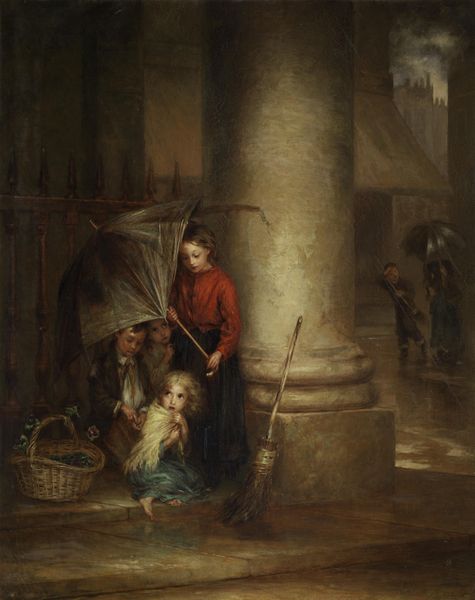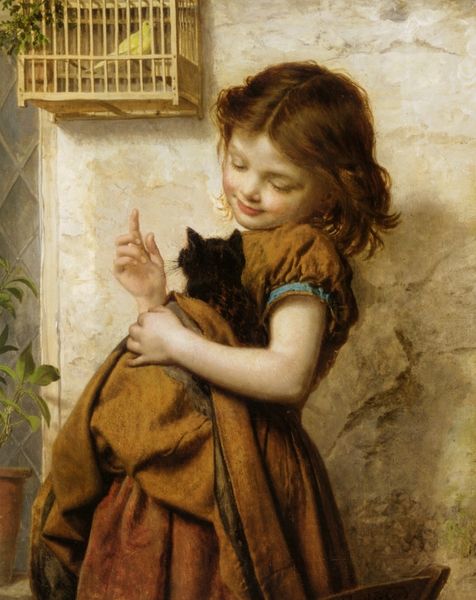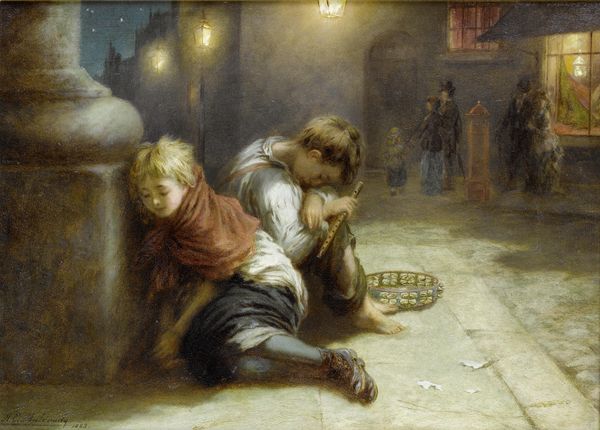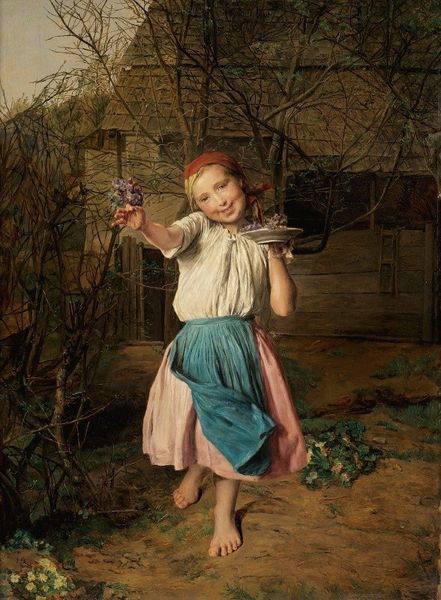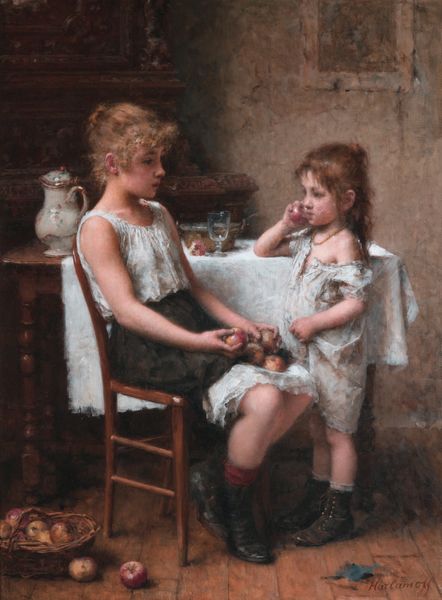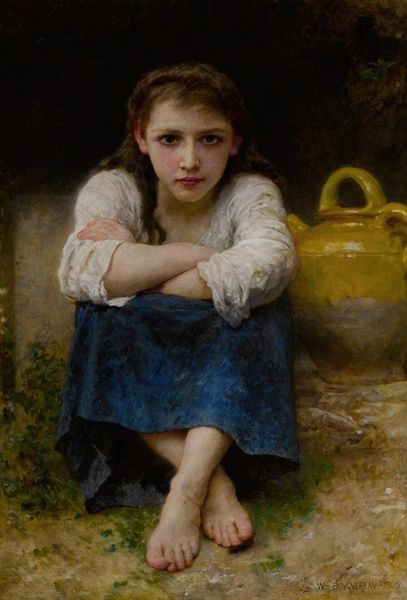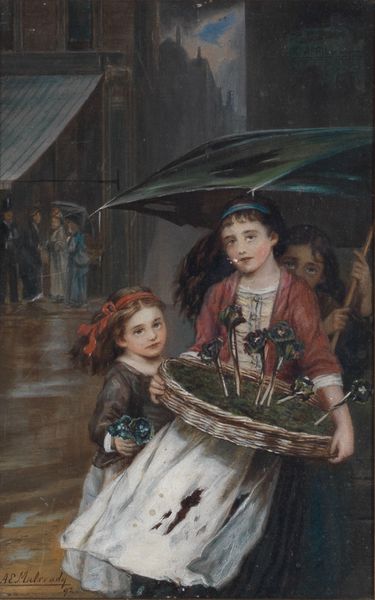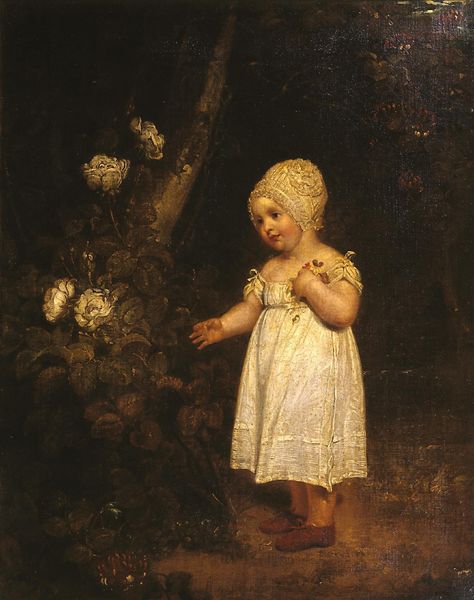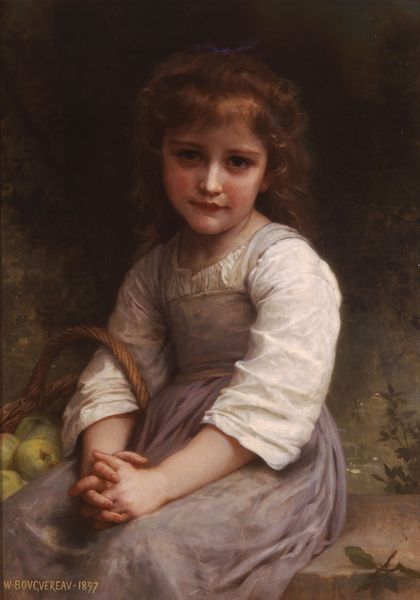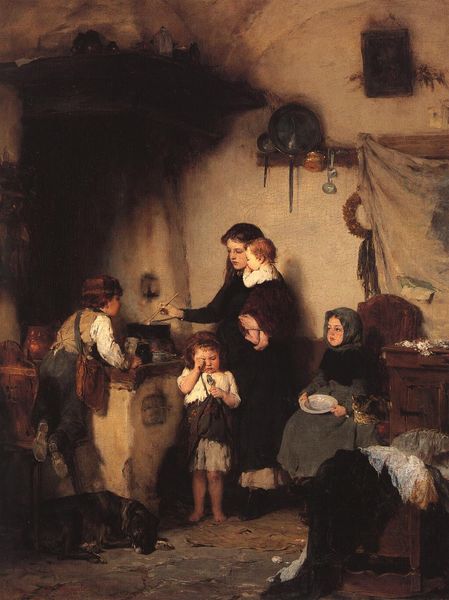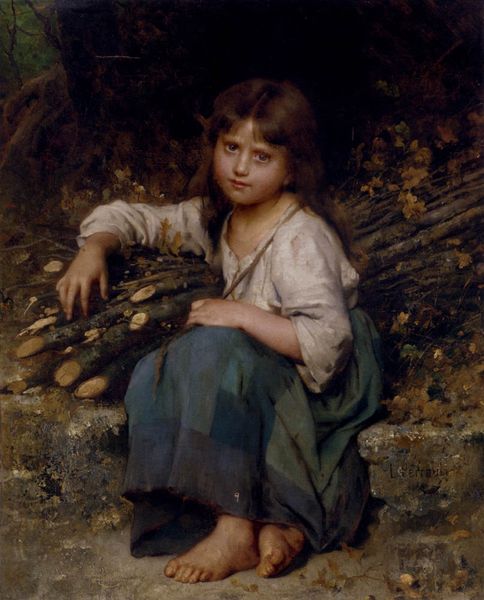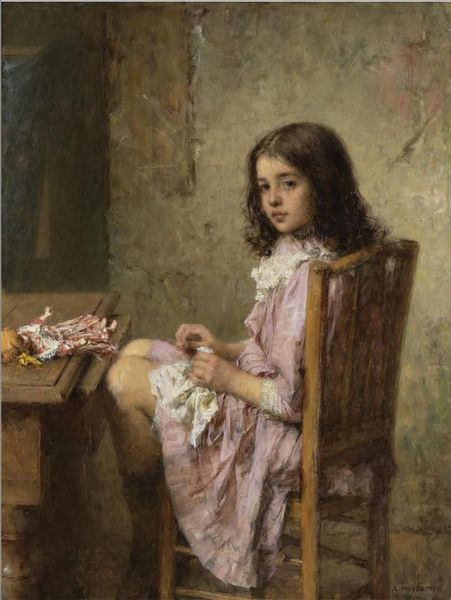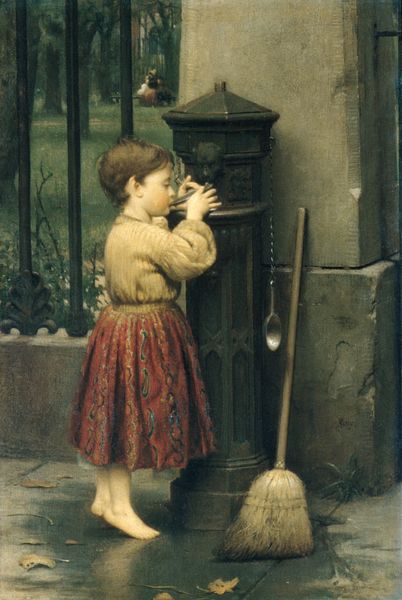
Copyright: Public domain
Curator: Augustus Edwin Mulready's 1871 oil on canvas, titled "Uncared For," offers a glimpse into Victorian London's social fabric. Editor: It strikes me immediately as melancholic, dominated by muted tones and the somber expressions on the children's faces. The urban environment feels harsh, despite the artistic framing. Curator: Absolutely. Mulready was known for his narrative-rich genre paintings often reflecting the realities faced by marginalized communities. You see here the contrast between childhood innocence and the backdrop of poverty. The positioning within a grimy alley, adorned with torn advertisements speaks volumes. Editor: And those advertisements themselves tell a story. I see bold pronouncements like "The Triumph of Christianity" juxtaposed with announcements from a "Foreign Aid Society." It’s fascinating how those elements, meant to inspire hope, clash with the tangible despair of the scene. I wonder if Mulready intended to critique the Church. Curator: The layering of these visuals likely serves to highlight the disjunction between the period’s prevalent social narratives and the lived experiences of many in London. It hints at questions around philanthropic responsibility, maybe its failure. Editor: The girl's posture—almost shielding the weeping boy beside her—her gaze looking directly at us makes me want to know more. Those violets in her hand and strewn at her feet hint at purity amidst squalor but feel bittersweet rather than redemptive, no? Curator: The floral motif connects to ideas about innocence and fleeting beauty, but there are also broader understandings to glean in relation to public consciousness. Remember this era coincided with increased calls for social reforms. It can also serve as symbols of sympathy, of memento mori—small emblems which echo the broader societal challenges concerning poverty, death, disease within working class conditions. Editor: Considering the painting’s title, “Uncared For,” these elements crystallize the feeling of neglect and abandonment. One can almost hear the clamor and bustle in the street—life seemingly indifferent to their plight. It compels us to contemplate progress. Curator: Exactly, progress for whom, at what cost. Looking back from a historical vantage point, paintings like "Uncared For" are powerful documents—challenging idealized notions of Victorian society. Editor: It leaves one pondering not only the social landscape of the time, but also the enduring power of visual storytelling to elicit empathy and provoke societal self-reflection.
Comments
No comments
Be the first to comment and join the conversation on the ultimate creative platform.
